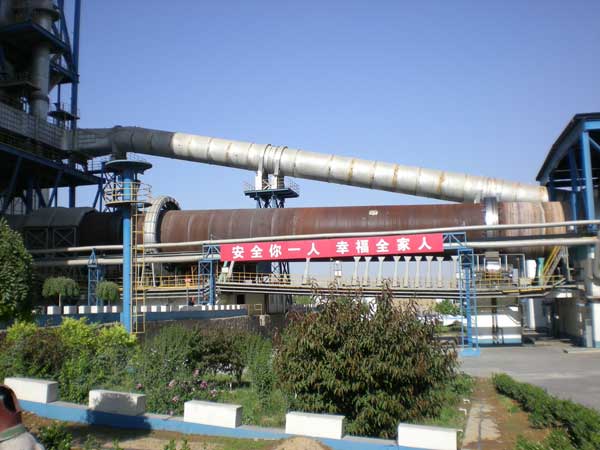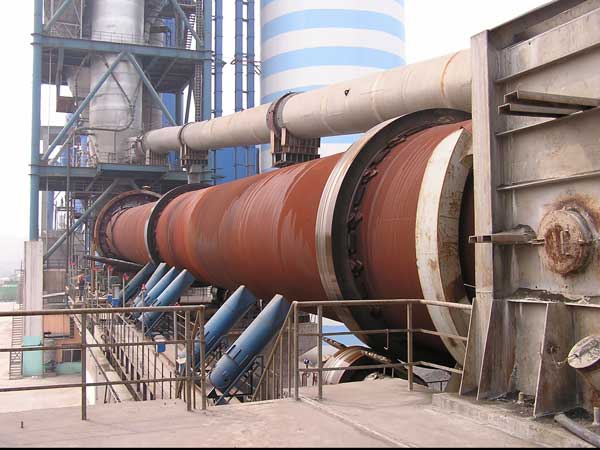With the rapid development of industries such as construction, road construction, and water conservancy engineering, more and more users are investing in cement production lines, but some users do not know much about the cement production process. This article makes a simple analysis of the cement rotary kiln process, which is convenient. Users understand.
1. Cement production process
The cement production process uses a new dry cement preparation process, which is mainly composed of crushing and pre-homogenization, raw material preparation and homogenization, pre-heat decomposition, cement clinker firing, cement grinding and packaging, etc. And grind, or dry and grind into raw meal powder, then feed the raw meal powder into the cement rotary kiln to calcinate the mature material, and then add the appropriate amount of gypsum (sometimes with mixed materials or additives) MBS type rod mill is finely ground.

Crushing and pre-homogenization
(1) Crush During the cement production process, most of the raw materials are crushed, such as limestone, clay, iron ore and coal. Limestone is the raw material that produces the largest amount of cement. After mining, the particle size is larger and the hardness is higher. Therefore, the crushing of limestone plays an important role in the crushing of the cement plant.
(2) Pre-homogenization of raw materials Pre-homogenization technology is the use of scientific stacking and reclaiming technology during the storage and retrieval of raw materials to achieve the initial homogenization of raw materials, so that the raw material yard has both storage and homogenization functions.
Raw material preparation
During the cement production process, at least 3 tons of materials (including various raw materials, fuels, clinkers, mixtures, and gypsum) must be ground for each ton of portland cement. According to statistics, the grinding operation of dry cement production lines requires consumption The power of the plant accounts for more than 60% of the plant’s power, of which raw material grinding accounts for more than 30%, coal grinding accounts for approximately 3%, and cement grinding accounts for approximately 40%. Therefore, reasonable selection of grinding equipment and process flow, optimization of process parameters, correct operation, and control of the operating system are of great significance for ensuring product quality and reducing energy consumption.

Raw material homogenization
In the new dry cement production process, the stability of the raw material composition in the cellar is the prerequisite for the stable thermal system of clinker firing. The raw material homogenization system plays the final role of stabilizing the raw material composition in the rotary cellar.
Preheat decomposition
The preheater and partial decomposition of the raw materials are completed by the preheater, which replaces some functions of the rotary kiln to shorten the length of the return kiln. At the same time, the kiln is stacked to perform the gas-material heat exchange process and moved to the preheater in a suspended state The following processes are carried out so that the raw material can be fully mixed with the hot gas discharged from the kiln, which increases the contact area of the gas material, the heat transfer speed is fast, and the heat exchange efficiency is high. purpose.
Firing of cement clinker
In the rotary kiln, the carbonate is further rapidly decomposed and a series of solid phase reactions occur to generate cement clinker. After a series of chemical reactions, the high temperature clinker discharged from the rotary kiln is cooled by the cement clinker cooler. To a reasonable temperature, while recovering the waste heat of the high-temperature clinker, improving the thermal efficiency and clinker quality of the rotary kiln.
Cement grinding
Cement grinding is the last process of cement manufacturing, and it is also a process that consumes a lot of power. Its main function is to grind cement clinker (and gelling agent, performance adjusting materials, etc.) to a suitable particle size (represented by fineness, specific surface area, etc.) to form a fine particle size that meets the requirements and increase its water content. It can accelerate the hydration rate and meet the requirements of cement slurry setting and hardening.
In general, the process of cement rotary kiln is crushed, batched, and ground to make raw materials, then homogenized, and then slowly calcined mature materials in the cement rotary kiln. After the finished product, it can be sent to the material end.


